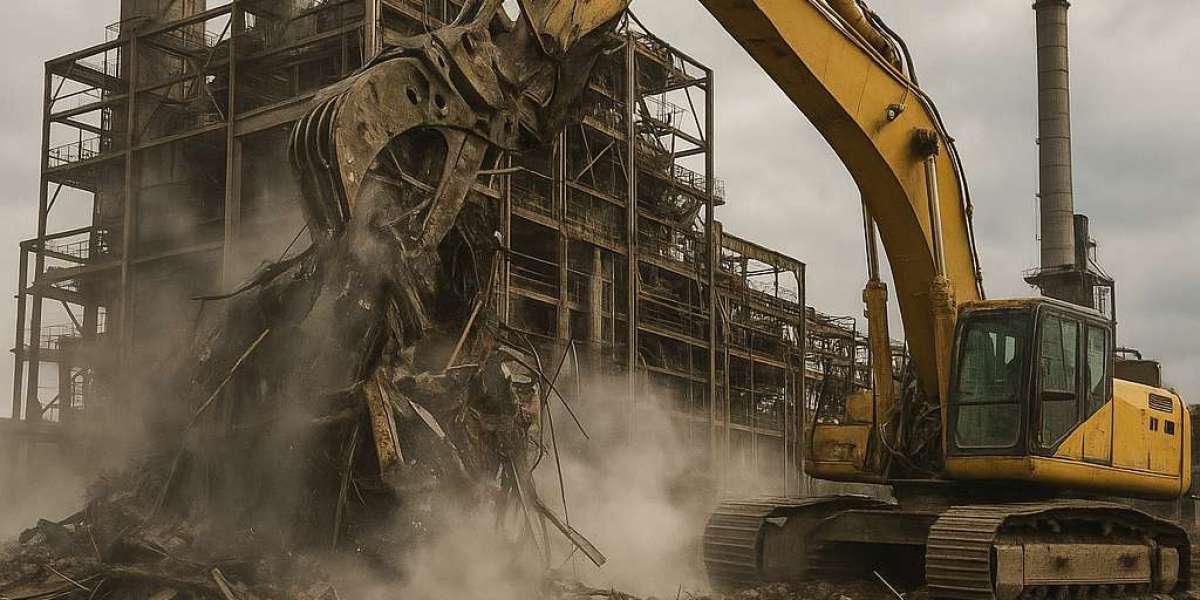Garage demolition is a significant project that involves tearing down a detached or attached garage structure, either partially or entirely. Whether you're planning to rebuild, repurpose the space, or remove an old, unsafe building, understanding the ins and outs of garage demolition is crucial. This guide provides detailed insights into why and how garage demolition is done, the steps involved, costs, permits, safety measures, and hiring professionals.
Why Garage Demolition is Necessary
There are several reasons why homeowners or property managers may choose to demolish a garage:
Structural Instability: Over time, garages can become unsafe due to weather damage, foundational issues, or termite infestations.
Renovation or Reconstruction: To make way for a new garage, a larger structure, or an addition to the home.
Asbestos or Mold: Older garages often contain hazardous materials that require removal.
Zoning Compliance: Sometimes, local building codes or property regulations necessitate the removal of non-compliant structures.
Aesthetic Improvements: Removing an outdated or mismatched garage can improve curb appeal and property value.
Types of Garage Demolition
Partial Demolition
This includes removing just part of the garage, such as the roof, a wall, or interior components while preserving the rest of the structure. It's common in remodeling projects.Complete Demolition
This involves tearing down the entire garage, including the foundation, leaving a clear site for new construction or landscaping.Manual Demolition
Typically done with hand tools for small or delicate projects. It's more time-consuming but allows for material salvaging.Mechanical Demolition
Uses heavy machinery like excavators or bulldozers. It's faster and more efficient for large or sturdy garages.
Steps in Garage Demolition
Planning and Inspection
Evaluate the structure and decide on the demolition method.
Determine if there are hazardous materials like asbestos.
Check for electrical, plumbing, or gas lines.
Permit Acquisition
Most local governments require a demolition permit.
You may need additional approvals if the garage is near property lines or contains hazardous materials.
Disconnection of Utilities
Safely shut off power, water, and gas to the garage.
This is typically done by licensed professionals.
Site Preparation
Remove vehicles, tools, and other items.
Erect safety fencing or barriers to protect the surrounding area.
Demolition Process
Manual or mechanical demolition begins, starting from the roof down to the foundation.
Waste materials are sorted and removed from the site.
Debris Removal and Site Cleanup
Concrete, wood, metal, and other materials are hauled away.
The site is leveled and cleaned, ready for future use.
Tools and Equipment Used
Sledgehammers
Reciprocating saws
Excavators
Jackhammers
Dumpsters
Safety gear (goggles, gloves, hard hats, boots)
Permit Requirements
Demolition permits are usually required and involve:
Submitting an application to the local municipality
Providing a site plan or scope of work
Paying permit fees
Scheduling inspections (before, during, or after demolition)
Failing to obtain a permit can result in fines or project delays.
Environmental and Safety Considerations
Garage demolition can have environmental and safety implications:
Asbestos & Lead Paint: Must be tested and handled by certified professionals.
Dust Control: Water spraying or tarps may be used to control dust.
Noise Regulations: Some areas restrict demolition hours to minimize disruption.
Recycling Materials: Wood, metal, and concrete can often be recycled or reused.
Hiring a Professional Demolition Contractor
Hiring an experienced and licensed contractor is often the safest and most efficient way to handle garage demolition. A good contractor will:
Handle permits and inspections
Disconnect utilities safely
Use proper tools and equipment
Remove debris responsibly
Ensure compliance with local regulations
Always request multiple quotes, check references, and review insurance coverage before hiring.
DIY Garage Demolition: Is It Worth It?
While it may seem like a cost-saving option, DIY garage demolition is risky unless you're experienced. Potential issues include:
Injury from improper tool use
Legal trouble due to missing permits
Difficulty disposing of large or hazardous debris
Damage to surrounding property
Unless the garage is small and easy to dismantle, hiring professionals is usually the smarter choice.
Conclusion
Garage demolition is a complex but manageable task when approached with proper planning and expertise. Whether you're upgrading your property, removing a hazardous structure, or preparing for new construction, understanding the full scope of garage demolition helps ensure a safe, efficient, and compliant process. By weighing your options, securing the necessary permits, and choosing the right method and professionals, you can complete your project with confidence and peace of mind.







